NATIONAL MUSEUM OF AMERICAN HISTORY
Bringing the Forgotten History of Black Firefighting to Life
Volunteer firefighters represented a potent swirl of masculinity, self-sacrifice, and republican virtue. But Philadelphia had no Black companies.
/https://tf-cmsv2-smithsonianmag-media.s3.amazonaws.com/filer_public/3a/2e/3a2ed37b-d763-4c63-a557-7fe952c12268/loc_lc-b811-3443.jpg)
It’s late winter of 2006 and an ornate silver speaking trumpet is on offer at a prestigious New York City auction house. The engraved inscription marks it as a gift to the Good Will Engine Company, a volunteer fire company founded in Philadelphia in 1802. The hammer falls on a bid of thousands.
It’s springtime of 2020 and a piece of metal has been found in the dirt of a Charleston, South Carolina, work site. The engraved inscription marks it as a badge from the Niagara Fire Company, a volunteer fire company founded in Charleston in 1861. Some old pennies and discarded buttons are found as well.
Both objects, the valued heirloom and the forgotten metal pin, now reside at the National Museum of American History. Each tells a very different story of African American communities and their connections to firefighting in the 1800s, one in the North and the other in the South.
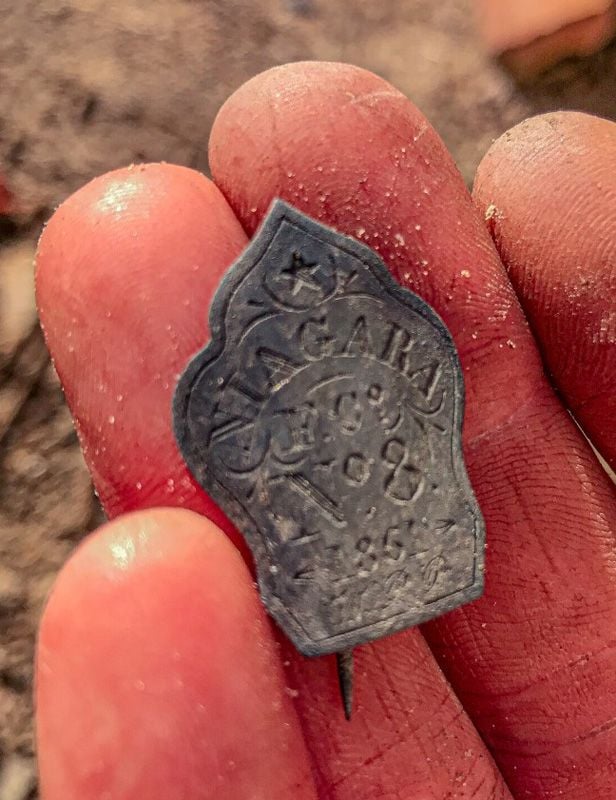
Volunteer fire companies were the norm in American cities and towns prior to the Civil War. Volunteer firefighters represented a potent swirl of masculinity, self-sacrifice, and republican virtue, securing them a heroic place in their communities. Elaborate uniforms and decorated fire engines both reflected and reinforced this special status. While they sometimes received financial assistance from local governments, such companies were largely independent, electing their officers and supplying their own equipment. Social clubs as well as civic saviors, these fire companies held fairs and balls, marched in parades, and trekked to visit fire companies in other cities. They also controlled the make-up of their membership by balloting new applicants. In Philadelphia, for instance, there were Protestant, Catholic, and Quaker fire companies; German and Irish companies; temperance companies; and even companies made up of single professions, like butchers. But Philadelphia had no African American companies.
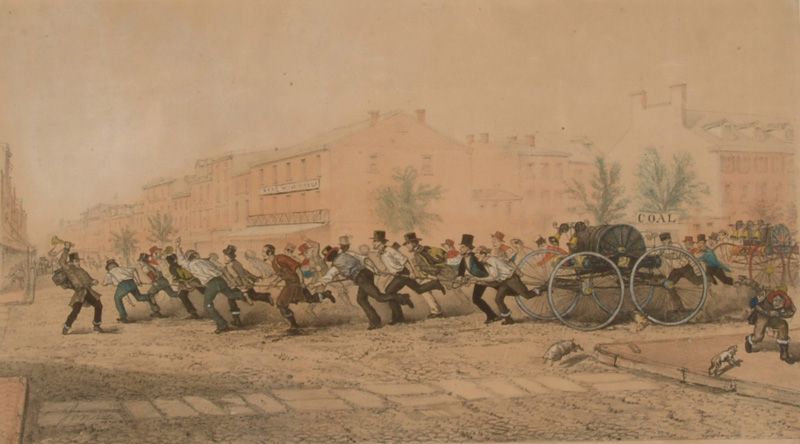
This was not for lack of trying. The African American community of antebellum Philadelphia was one of the largest in any Northern city, with established cultural organizations—churches, benefit societies, etc.—dating back to the late 1700s. A volunteer fire company was another form of civic engagement and recognition, and a group of young men proposed the African Fire Association in 1818, as one account put it, out of “a pure and laudable desire to be of effective service.” Regardless of intent, this effort was quashed within weeks. White firefighters objected, even threatening to quit altogether. The city had enough fire companies, they argued. Another company at a fire would decrease water pressure, they claimed. Black Philadelphians would do better to organize a gutter-cleaning brigade, they suggested. African American leaders worried that white volunteers would simply refuse to respond to fires in their communities, and this threat doomed the nascent African Fire Association.
While African Americans found themselves excluded from firefighting in Northern cities like Philadelphia, some Southern cities such as Charleston relied on Black firefighters. Beginning in the early 1800s, African Americans, both enslaved and free, organized around auxiliary pumpers, called “ward engines,” meant to support white volunteer companies at fires. These ward engine companies were under the authority of white officers, but the men were issued badges and eventually uniforms and enjoyed some level of community status. They were even paid for their time assisting at a fire, though at a lower rate than their white counterparts, and enslaved men would likely have been expected to turn over their earnings. Charleston was notoriously flammable in the pre-war period, and hundreds of African American firefighters regularly worked to save the city from destruction, even as fires were often blamed on enslaved rebels and Black arsonists.
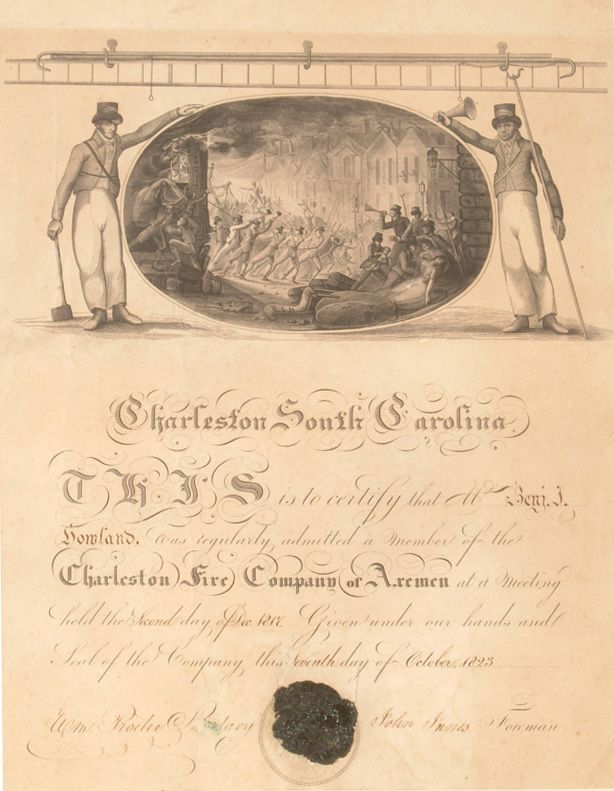
With no such direct role in firefighting, Black Philadelphians could only rely on white volunteers to do their duty in times of crisis, and this was no guarantee of protection. In 1838, for instance, when racist mobs set fire to the newly-built abolitionist landmark, Pennsylvania Hall, there were reports that fire companies refused to douse the flames, focusing only on adjacent buildings. But the next day, when rioters tried to burn down the Shelter for Colored Orphans, Good Will Engine Company and others arrived promptly and saved the building.
In an election day riot in 1849, white gangs, some affiliated with fire companies, attacked and torched the California House, a tavern and “resort of people of colour” as it was described in the papers of the day. Benjamin Jackson, the owner, and others fought back, and the violence spilled into the streets. When Good Will Engine Company attempted to extinguish the fire, one of its members, Charley Hummelwright, was shot and killed by the rioters. Two other firefighters died later from injuries they sustained on the night.

Though they were denied a role in firefighting, African Americans in Philadelphia still found ways to participate (if indirectly), to demonstrate their support, and to make their voices heard. Good Will’s sacrifice and their seemingly colorblind commitment to duty prompted action from the city’s African American community. A group of women began to collect donations for a silver presentation piece, a speaking trumpet like those firefighters used to call out orders at the scene of a blaze. The grateful women awarded the trophy to members of Good Will in late April of 1852, ahead of a major fire department parade, where the “magnificent Silver Horn” was carried by the company for all to see. As one news account noted, “Good Will company may justly feel proud of this gift.”
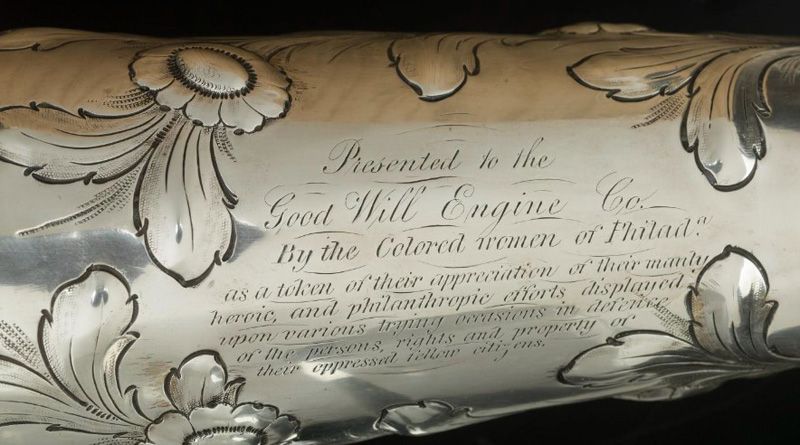
For African American firefighters in Charleston, the challenge was not participation, but participation on their own terms. The onset of the Civil War provided that opportunity. White firefighters enlisted for military service in large numbers, leaving city companies depleted. Freemen who had served on the auxiliary ward engines pushed against the boundaries of their civic role and stepped up to fill the gap. In the first days of November 1861, some of these firefighters formed the Niagara Fire Company No. 8, an independent African American volunteer fire company. It was an event both pioneering and timely. Only weeks later, on December 11, 1861, Charleston experienced the worst fire in its history. Over 500 acres burned in the heart of the city, destroying nearly 600 homes and businesses, leaving devastation that would remain through the war years. It isn’t yet known if the newly-established Niagara Fire Company helped fight the fire—no newspaper account mentions the participation of Black firefighters—but in such a conflagration, it was surely every hand to the pump. After all, their company motto was “Ever Ready.”
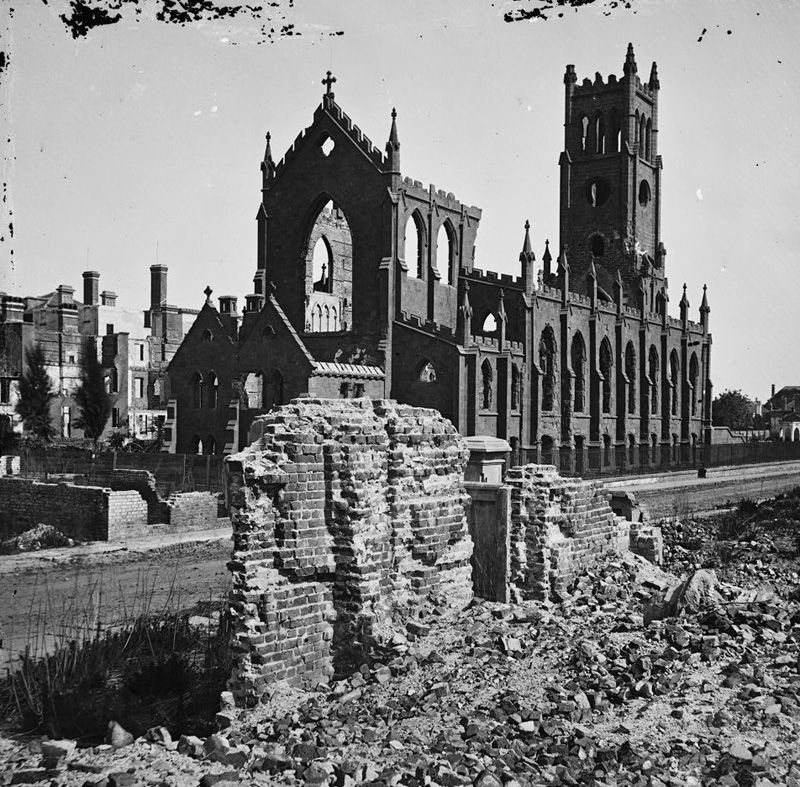
Black Charlestonians founded additional independent fire companies—the Comet Star, the Ashley, the Promptitude—just as they continued to build up their civic presence with other organizations—the Mechanics Association, the Moral Friendship Club, the St. Johns Evangelical Society. By the time of the surrender of Charleston to Union forces early in 1865, there were some 10 fire companies that marched along with Black Union regiments in a celebratory parade. A reporter noted that the firefighters “were greeted with hearty cheers as they passed along.” One of those marching along with Niagara may have been William P. Perry, a local bricklayer who was just 17 years of age when he joined up. It would be his badge discovered in the dirt some 160 years later, near where the Niagara firehouse once stood.
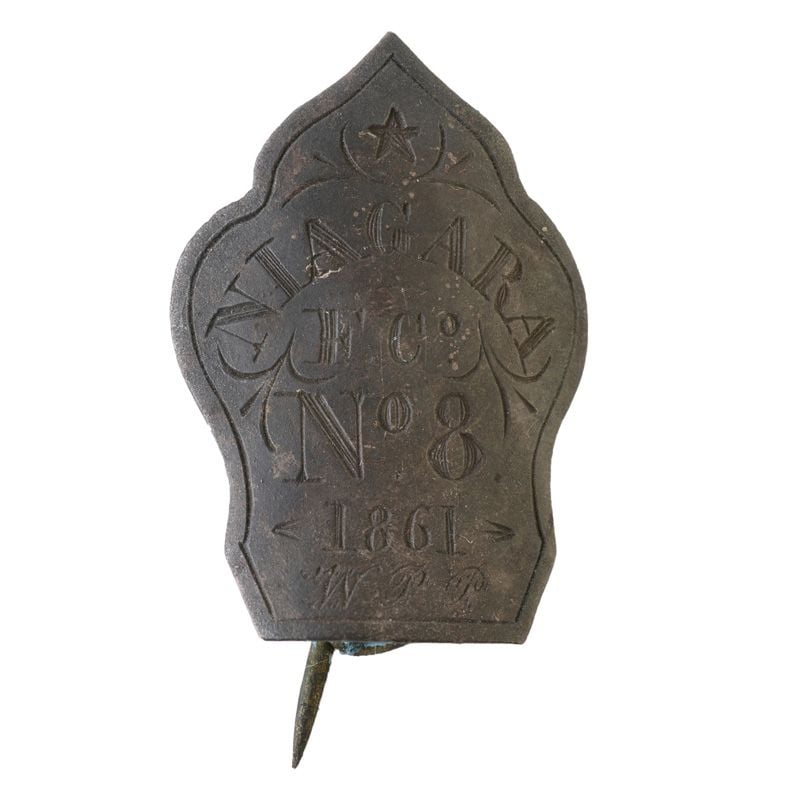
By 1869, Niagara and the other African American fire companies were officially incorporated by the state. But proposals for formal and equal recognition by the Charleston fire department met with backlash from the white fire companies and their supporters. The city had enough fire companies, they argued. The white companies would disband in protest, they warned. Insurance rates would skyrocket, they claimed. In the end, the African American companies did join the department, but plans for their own board of directors were withdrawn. Niagara would operate like any volunteer company of the day, holding officer elections, publishing notices of its meetings in the city papers, collecting dues from members, drilling for regular city inspections, hosting annual fairs, and marching in parades along with resentful white companies. These white companies quickly upgraded to the newest steam engine technology, effectively creating a two-tiered system where Black hand engine companies were again relegated to supporting roles. But soon enough, there were two African American steamer companies, as well.
Nevertheless, these efforts by Black Charlestonians to assert their civic equality would be short-lived. By the late 1870s, with the end of Reconstruction and the imposition of Jim Crow systems in the South, the number of African American firefighters in Charleston dwindled. The entire volunteer system in Charleston would be replaced by a paid department in 1882, and with it, Niagara and the other independent Black engine companies were eliminated. Some African Americans would continue to serve in the new paid system, though segregated into two ladder companies until the 1970s, when the Charleston Fire Department was finally integrated.
Back in Philadelphia, the volunteer fire companies continued to block African American participation until the whole system was replaced with a paid department in 1871. Even then, it would not be until 1890 when Stephen Presco became the city’s first fully vested Black firefighter (another man, Isaac Jacobs, had been hired a few years earlier, but his duties were limited to cleaning and care of horses). In 1907, while still the only Black firefighter on the job, he was severely injured at a factory fire and died the next day. In life and in death, Presco answered the call to duty and sacrifice that had animated the men behind the proposed African Fire Association nearly a century earlier, that had inspired the women who rewarded that same spirit in the Good Will Engine Company, and that had fueled the resolve of his brother firefighters in Charleston.
This post was originally published on the National Museum of American History's blog on October 4, 2021. Read the original version here.
